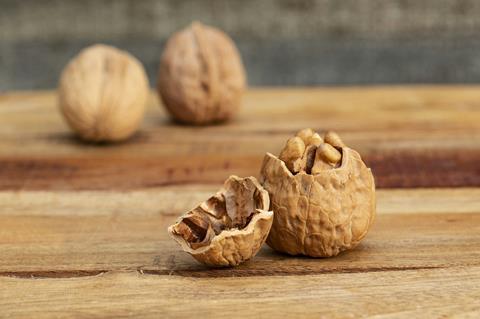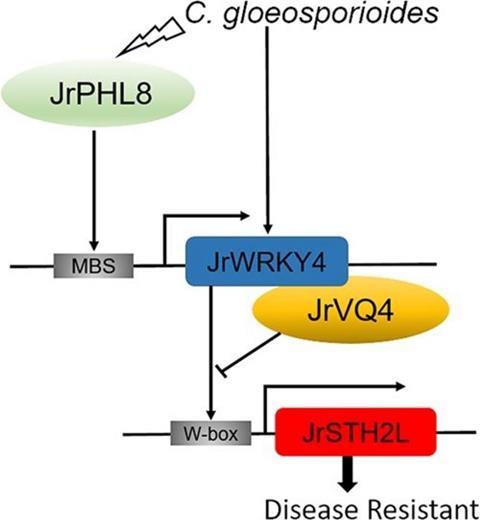A pivotal study has pinpointed a gene module crucial for enhancing walnut trees’ resistance to anthracnose, a widespread fungal disease threatening the walnut industry. The research reveals how the JrPHL8-JrWRKY4-JrSTH2L module regulates disease defense, opening up new opportunities for breeding resistant walnut varieties and promoting sustainable cultivation practices.

Anthracnose, caused by Colletotrichum gloeosporioides, poses a significant threat to walnut production, causing severe losses in yield and quality. Traditional control methods are limited, and environmental concerns drive the need for alternative strategies.
READ MORE: Research unveils rhizobia strains effective against soybean root rot fungal pathogens
READ MORE: Climate change boosts olive tree-devouring bacteria in the Mediterranean
Transcription factors like WRKYs and MYBs are key in plant immunity, yet the molecular mechanisms behind walnut resistance to anthracnose have remained largely unexplored. Given these challenges, an in-depth study of the molecular pathways in walnut defense is essential.
Walnut resistance
Published (DOI: 10.1093/hr/uhae148) in Horticulture Research on May 28, 2024, researchers from Shandong Agricultural University unveiled the role of the JrPHL8-JrWRKY4-JrSTH2L module in walnut resistance to anthracnose. This study marks a significant leap in understanding how transcription factors and interacting proteins contribute to disease resistance in walnuts, offering new directions for developing disease-resistant varieties.
The study identifies JrWRKY4 as a key transcription factor enhancing walnut resistance to anthracnose. Positioned in the nucleus, JrWRKY4 functions as a transcriptional activator, binding to the W-box in the JrSTH2L gene promoter, thereby boosting its expression—a crucial step in the plant’s immune response.

The research also reveals that JrVQ4 protein interaction inhibits JrWRKY4’s activation of JrSTH2L, suggesting a complex regulatory system. Additionally, the MYB transcription factor JrPHL8 was found to bind to the MBS element in the JrWRKY4 promoter, enhancing its transcription and further strengthening the plant’s resistance. Together, these findings provide a detailed understanding of the JrPHL8-JrWRKY4-JrSTH2L module’s role in anthracnose defense, highlighting its potential as a target for breeding disease-resistant walnut varieties.
New avenues
Dr. Hongcheng Fang, the lead researcher, highlighted the significance of these findings, stating: “This discovery not only elucidates the complex regulatory network behind walnut resistance to anthracnose but also opens up new avenues for developing disease-resistant cultivars. By focusing on the JrPHL8-JrWRKY4-JrSTH2L module, we can enhance walnuts’ natural defense mechanisms, reducing dependency on chemical treatments and fostering more sustainable agricultural practices.”
The insights gained from this research extend beyond fundamental science. The JrPHL8-JrWRKY4-JrSTH2L module presents a promising target for genetic engineering and breeding programs aimed at producing anthracnose-resistant walnuts. This approach aligns with global efforts to minimize pesticide use in agriculture and could be applied to other crops facing similar pathogen challenges, broadening the potential impact on crop protection and food security.







No comments yet